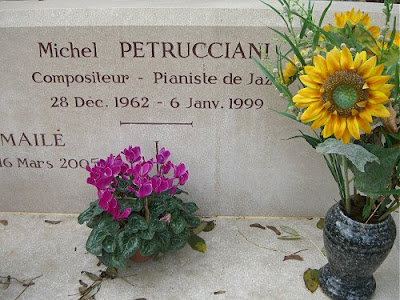How an orchestra boosted ticket sales by $23,000

Young people are more responsive to the visual than to the aural, which is why using images to attract new audiences to classical music is a recurring theme On An Overgrown Path. A number of North American orchestras have been experimenting with concert visuals and the Toronto Symphony has now joined their number as described on the orchestra's website:
Visual elements added to performanceConcert visuals are nothing new, in fact James Westwater has been developing them for over thirty years. He claims that adding visuals also adds audience numbers and quotes testimonials on his website to prove it. A testimonial from the Santa Barbara Symphony says concerts with visuals were their second best ticket draw ever (the first was Beethoven's Ninth Symphony) and that the orchestra sold $23,000 worth of tickets from walk-up patrons alone for the photochoreographed concerts. Here is James Westwater's description of how it works:
With the 2012.2013 season, the TSO adds more visual elements to the concert experience than ever before. In partnership with the Royal Scottish National Orchestra, the TSO has commissioned photographer James Westwater to photo-choreograph Smetana’s Mà Vlast, the composer’s heartfelt tribute to the lush landscapes of his Czech homeland (Apr 17 & 18, 2013). Images illustrating Mussorgsky’s Pictures at an Exhibition will be projected above the Orchestra in performances led by TSO Music Director Peter Oundjian (Sep 27 & 29, 2012); and with West Side Story, TSO Principal Pops Conductor Steven Reineke leads the TSO in Leonard Bernstein’s score, live with the remastered film (directed by Robert Wise and Jerome Robbins, featuring Robbins's choreography, Ernest Lehman’s screenplay, Arthur Laurents's book and Stephen Sondheim's lyrics) shown in hi (May 28 & 29, 2013).
Symphonic photochoreography is an innovative art form that is connecting today’s orchestras with today’s audiences. It engages audiences worldwide with evocative, multi-image photographic essays choreographed and performed live to selected works of classical music. We cue photochoreography to the orchestra's performance of the music. No click track is used.It could be argued that concert visuals are rather like playing Bach on the piano - there is nothing heretical involved but it did not happen in the composer's day simply because the enabling technology was not invented. In the past the composer was willing even if the technology was not: back in 1909 Alexander Scriabin pioneered musical notation for light and colour in his 1909 symphonic poem 'Prometheus: the Poem of Fire'. This was notated for a custom designed light projector built by a Russian physicist which the conductor controlled from a colour keyboard - crude technology which has been superseded by today's computer graphics and high resolution projectors.
During a performance, hundreds of thematically-related photographs are projected onto a 440-square-foot, three-panel, panoramic screen suspended above the orchestra. As the musicians perform the music under the orchestra's conductor, the guest artist (photochoreographer) precisely cues elegant visual transitions, filling the screen with single, double and triple image combinations that often form impressive panoramas.
This creative synthesis of music and imagery provides a compelling new symphonic experience that has been performed with over 150 orchestras across North America and abroad.
But adding concert visuals is not going to be universally welcomed and for those who still think it too populist I commend another aspect of the Toronto Symphony's activities. This is their New Creations Festival in March which is curated by Peter Eötvös and comes without photochoreography. The New Creations Festival's programme of contemporary music includes French Canadian composer Claude Vivier's cantata Lonely Child and his orchestral work Orion. There is a chance link with the visual theme here as Claude Vivier was influenced by the spectralist school of composers, as is Jonathan Harvey. Speakings for large orchestra and electronics by Jonathan Harvey uses a sound designer - the sonic equivalent of James Westwater's photochoreographer - to manipulate aural images during the work's performance. You can hear Jonathan Harvey describing the role of the sound designer in his interview with me.
So, as ever, many paths converge. Well done to the Toronto Symphony Orchestra for seeing the light in more ways than one, and there is more on Claude Vivier the classical music envelope pusher here.

* Header visual shows Symphony magazine issue which features an article on how orchestras are utilizing multimedia, the photo is the Orlando Symphony Orchestra performing Copland's Lincoln Portrait - read the article here. Footer image shows James Westwater installation for the Grand Junction Symphony Orchestra.
Also on Facebook and Twitter. Any copyrighted material on these pages is included as "fair use", for the purpose of study, review or critical analysis only, and will be removed at the request of copyright owner(s). Report broken links, missing images and errors to - overgrownpath at hotmail dot co dot uk








Comments
http://beyondthescore.org/